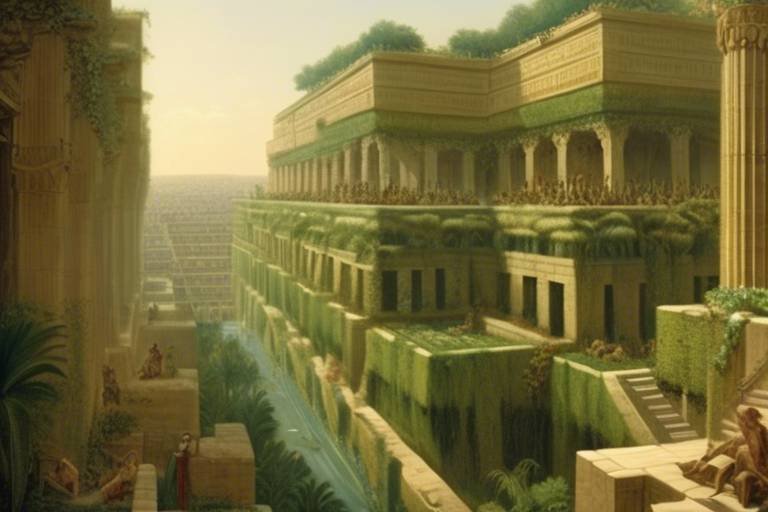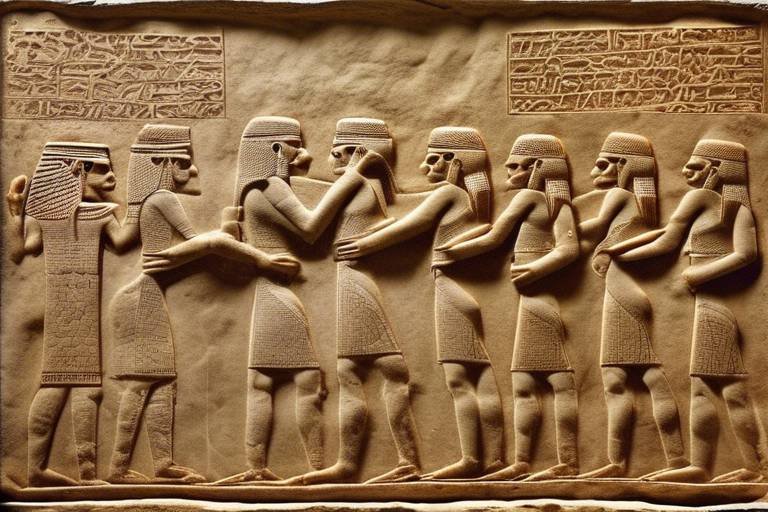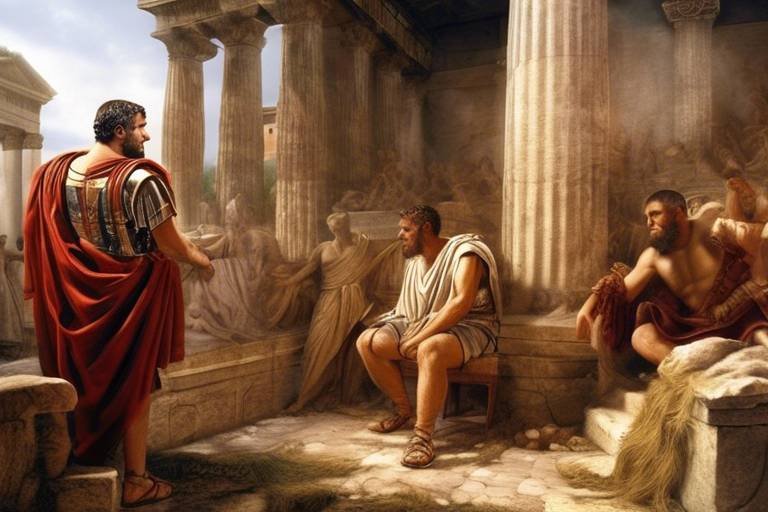The Mystery of the Ancient Egyptians' Burial Practices
Have you ever wondered about the enigmatic burial practices of the ancient Egyptians? Step into the world of the pharaohs and uncover the secrets shrouded in the sands of time. From elaborate tombs to intricate mummification processes, the ancient Egyptians' approach to death and the afterlife is a captivating journey filled with symbolism and mystique.
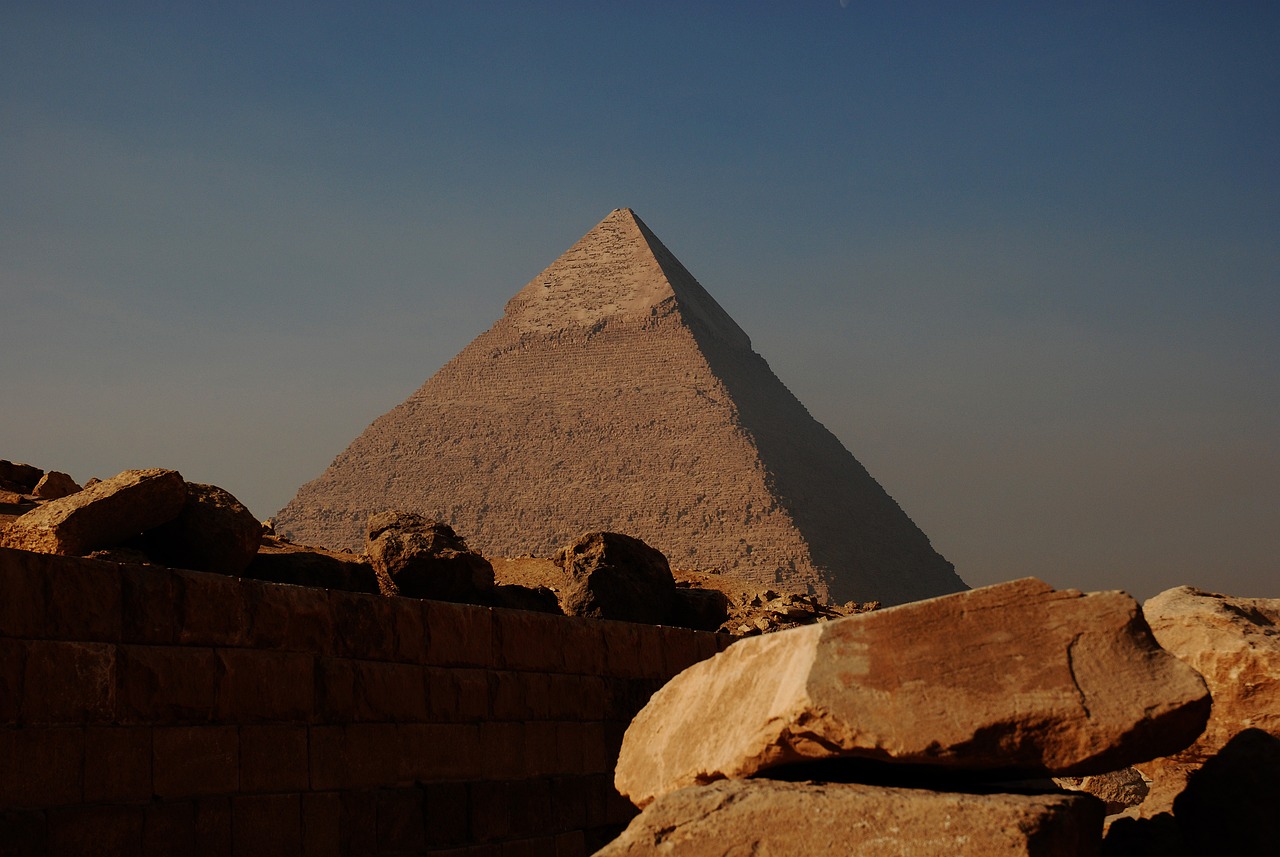
Importance of Burial Rites
When delving into the ancient Egyptian civilization, one cannot overlook the profound importance placed on burial rites. These rituals were not merely practical proceedings but rather intricate ceremonies deeply intertwined with the core beliefs and values of the society. The Egyptians believed that death was not the end but a transition to another realm, and thus, the proper burial of the deceased was crucial to ensure a successful journey to the afterlife.
The act of preserving the physical body through mummification was seen as a way to safeguard the individual's existence in the afterlife. It was believed that the soul needed a recognizable vessel to return to after its journey through the underworld. Therefore, the meticulous process of mummification was a sacred duty performed with utmost care and reverence.
Moreover, the elaborate tombs and pyramids constructed for the pharaohs and nobility served not only as grand monuments but also as eternal homes for their spirits. These monumental structures were filled with treasures, artifacts, and inscriptions, all carefully designed to accompany the deceased on their journey and provide them with the necessary tools and provisions in the afterlife.
The burial rituals and offerings made during funerary ceremonies were not mere gestures of respect but vital components of ensuring the well-being of the deceased in the afterlife. Priests and ritual specialists conducted these ceremonies with precision, reciting spells and incantations to guide the soul on its journey and protect it from malevolent forces.
Symbolism played a significant role in the artifacts buried with the deceased. Items such as amulets, canopic jars, and funerary masks held symbolic meanings related to protection, rebirth, and guidance in the afterlife. Each object was carefully selected and imbued with spiritual significance to aid the deceased in their passage to the realm of the gods.
Overall, the importance of burial rites in ancient Egyptian culture cannot be overstated. These practices were not merely rituals but profound expressions of the Egyptians' beliefs in the continuity of life beyond death and the eternal journey of the soul. The meticulous attention to detail and the elaborate ceremonies surrounding death reflected the society's deep-rooted reverence for the afterlife and the spiritual realm.
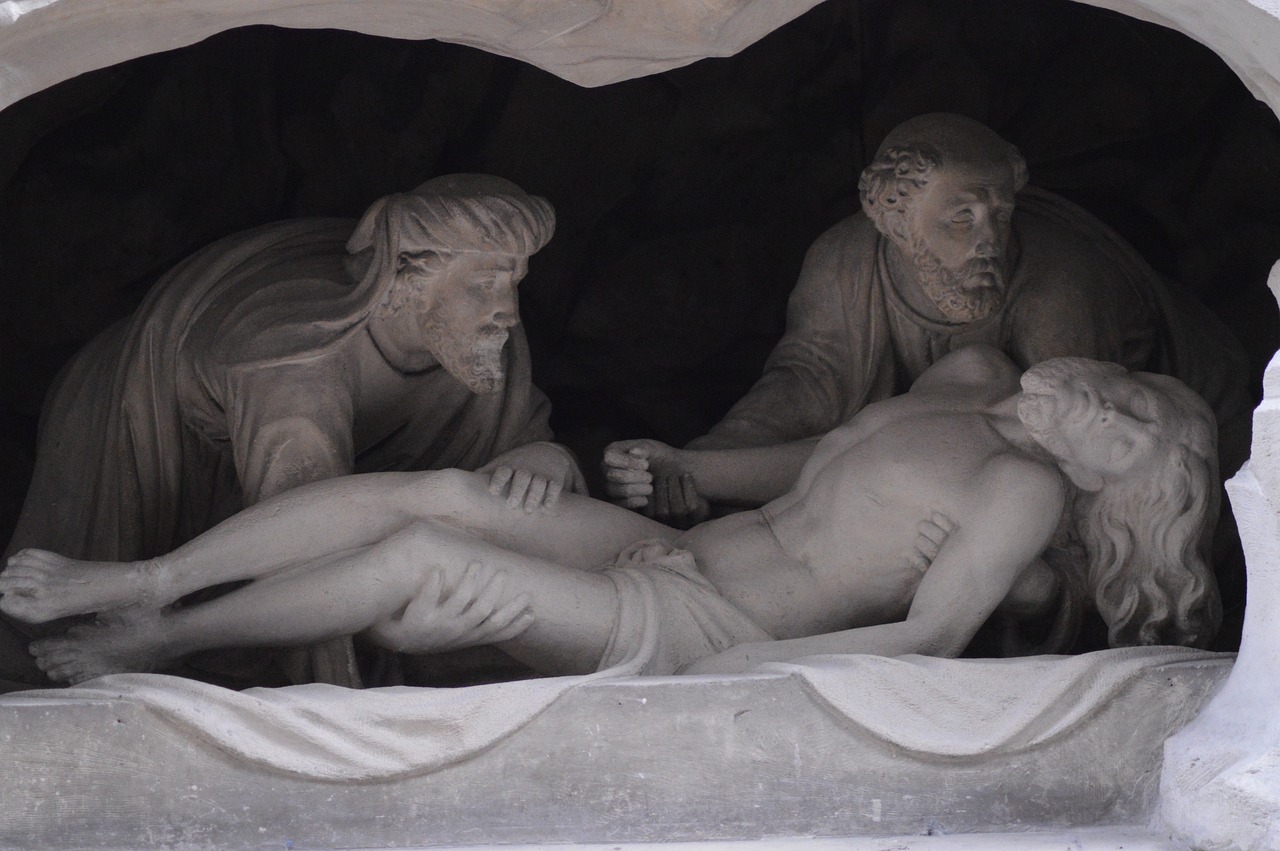
Tombs and Pyramids
When it comes to ancient Egyptian burial practices, one of the most iconic images that comes to mind is that of the grand tombs and towering pyramids that served as the final resting places for the pharaohs and nobility of that time. These monumental structures were not just majestic in appearance but also held deep significance in the beliefs and culture of the ancient Egyptians.
The construction of these elaborate tombs and pyramids was a testament to the power and status of the rulers they housed. The pyramids, in particular, such as the famous Great Pyramid of Giza, were built with precision and engineering marvel that still baffles historians and archaeologists today. These structures were not merely burial sites but were considered gateways to the afterlife, where the deceased would embark on their journey to eternity.
Inside these tombs and pyramids, treasures beyond imagination were buried alongside the pharaohs, intended to accompany them in the afterlife. The intricate hieroglyphs and paintings adorning the walls of these structures depicted scenes from the pharaoh's life and their anticipated journey in the afterlife, providing a glimpse into the beliefs and rituals of ancient Egyptian society.
Moreover, the layout and design of these tombs and pyramids were carefully planned to align with the stars and celestial bodies, reflecting the Egyptians' profound connection to the cosmos and their belief in the continuity of life beyond death. The construction of these monumental edifices was not just a physical endeavor but a spiritual and religious undertaking that showcased the Egyptians' reverence for the afterlife and their elaborate funerary practices.
Exploring these tombs and pyramids today offers a window into the ancient Egyptian civilization's beliefs, customs, and artistry. The grandeur and mystique surrounding these structures continue to captivate the imagination of people worldwide, inviting us to unravel the secrets and mysteries of the past hidden within their walls.
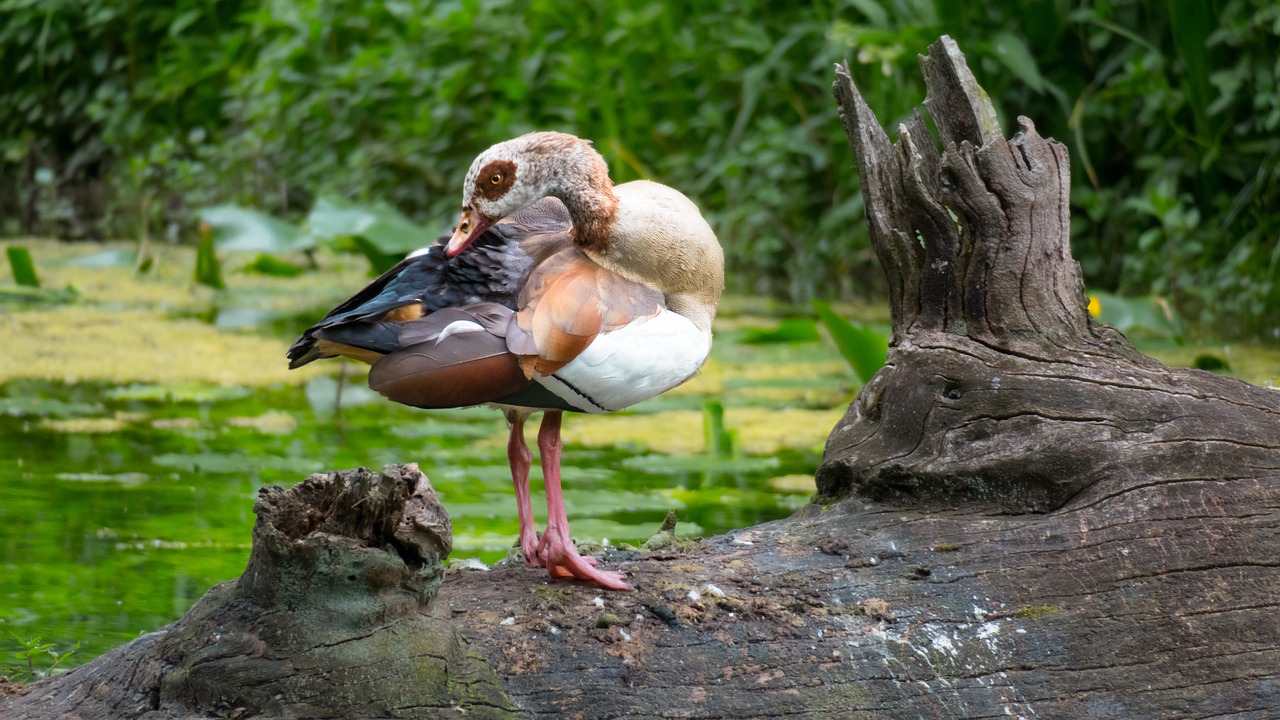
Mummification Process
One of the most fascinating aspects of ancient Egyptian burial practices is the intricate process of mummification. This elaborate procedure was meticulously carried out to preserve the body for the afterlife, ensuring that the deceased could continue their journey in the next world. The mummification process involved a series of meticulous steps that were both scientific and ritualistic in nature.
First, the body was washed and purified with natron, a type of salt that helped to dry out the tissues and prevent decomposition. The internal organs were then removed and preserved separately in canopic jars, each protected by a different deity. The body was carefully wrapped in linen bandages, with amulets and charms placed between the layers to provide protection and magical assistance in the afterlife.
Moreover, the mummification process was overseen by embalmers who were skilled in the art of preserving the body. These individuals were considered sacred and had a deep understanding of the religious rituals associated with death and the afterlife. The entire process of mummification could take up to 70 days, with each stage carried out with precision and care.
Furthermore, the belief in the importance of mummification stemmed from the ancient Egyptians' strong conviction in the continuity of life after death. They believed that the soul needed a preserved body to return to after its journey in the afterlife. Therefore, mummification was not only a physical process but also a spiritual one, symbolizing the eternal nature of the soul.
Through the mummification process, the ancient Egyptians sought to ensure the immortality of the deceased and their ability to navigate the challenges of the afterlife. The preservation of the body was seen as a crucial step in preparing the individual for the judgment that awaited them in the next world. This intricate and sacred process sheds light on the profound beliefs and practices of ancient Egyptian culture surrounding death and the afterlife.
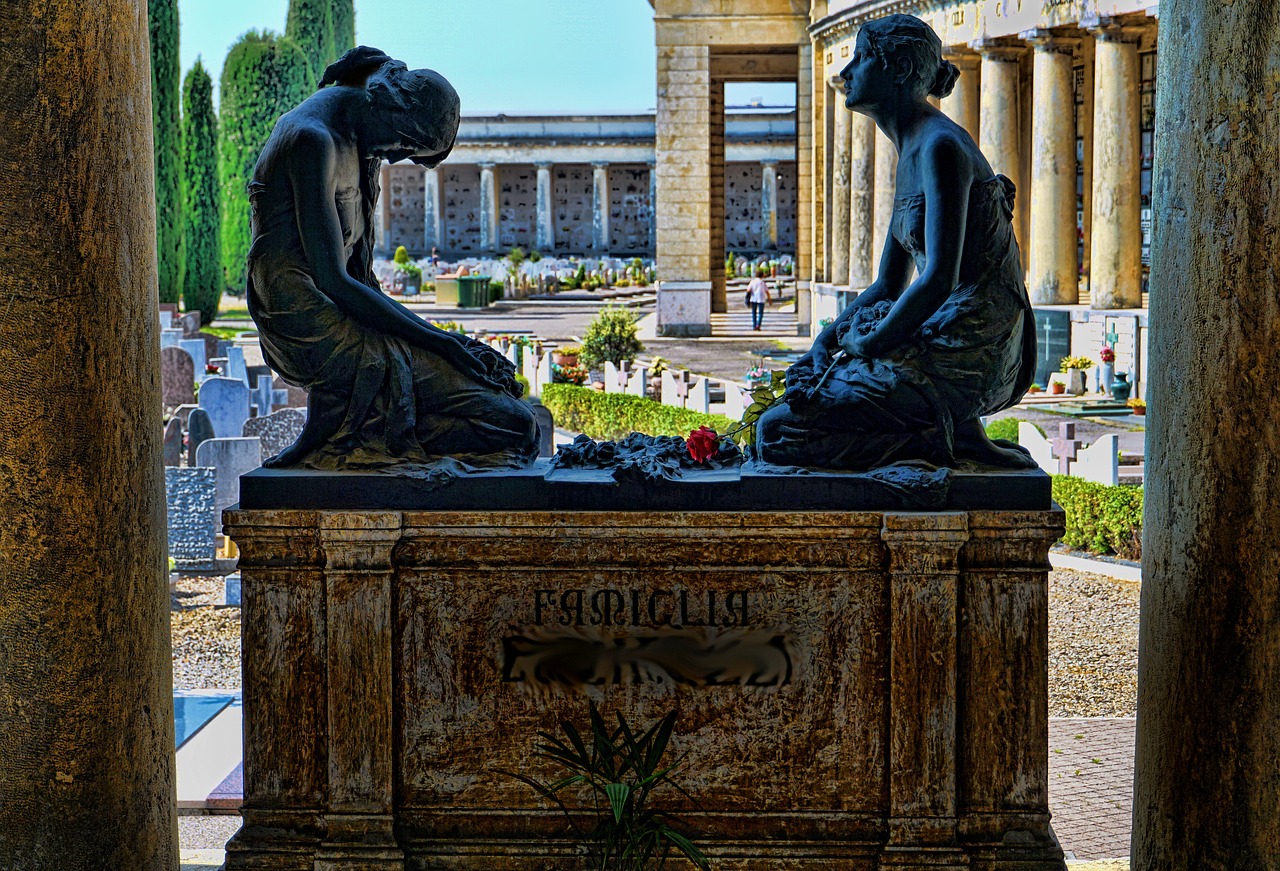
Funerary Rituals and Offerings
Funerary rituals and offerings held immense importance in ancient Egyptian burial practices, serving as a way to honor the deceased and ensure their smooth transition to the afterlife. These rituals were deeply rooted in religious beliefs and traditions, reflecting the Egyptians' profound reverence for the journey of the soul beyond death.
During these ceremonies, priests and ritual specialists played a crucial role in performing sacred rites and offering prayers to guide the departed on their spiritual voyage. Offerings of food, drink, incense, and symbolic objects were presented at the tomb or burial site as a gesture of respect and to provide sustenance for the deceased in the afterlife.
Symbolism played a significant role in the selection of offerings, with each item carrying a specific meaning and purpose. For example, the 'Opening of the Mouth' ceremony symbolized the restoration of the deceased's senses and abilities in the afterlife, ensuring their well-being and vitality in the next realm.
Artifacts such as amulets, jewelry, and canopic jars were also placed in the tomb as protective talismans and tools to aid the deceased in their journey. These items were believed to ward off evil spirits, provide magical protection, and assist the soul in navigating the challenges of the underworld.
The meticulous preparation of funerary offerings and rituals underscored the Egyptians' deep-seated belief in the continuity of life after death and the importance of maintaining a strong connection between the living and the deceased. Through these ceremonies, the ancient Egyptians sought to ensure the eternal well-being and happiness of their departed loved ones in the afterlife.
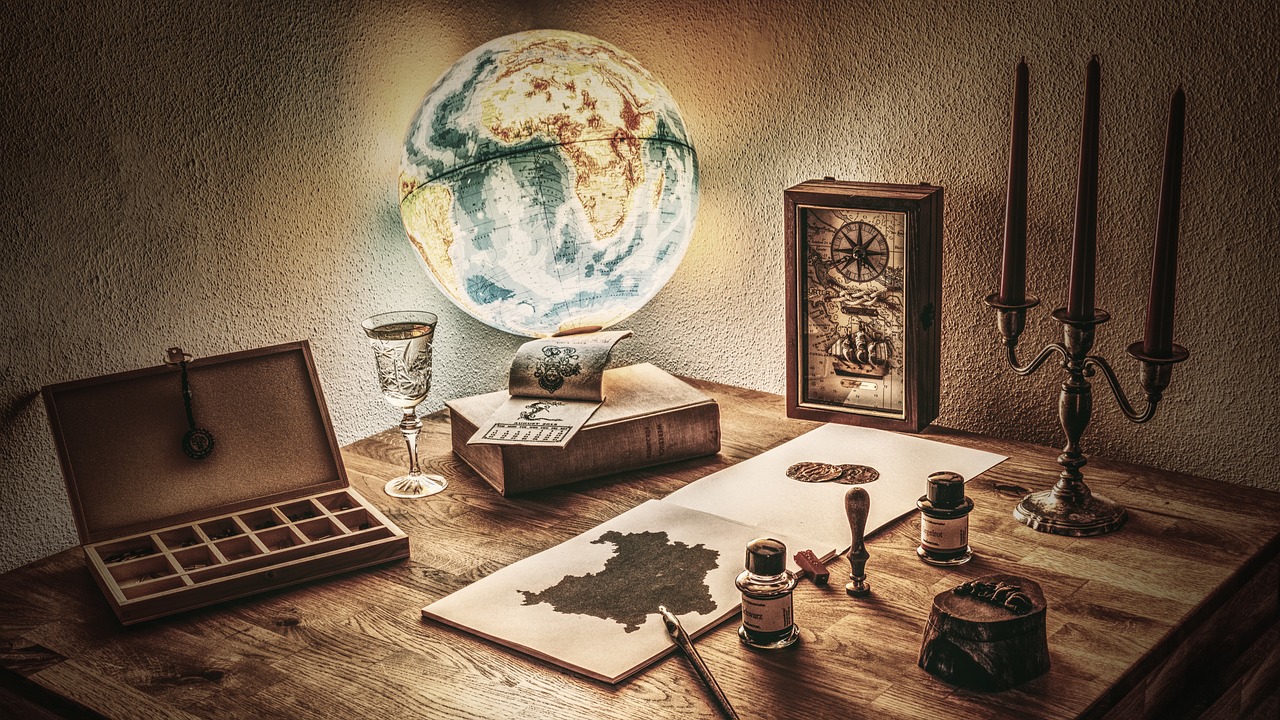
Symbolism in Burial Artifacts
Exploring the symbolic meanings behind the various artifacts buried with the deceased sheds light on the rich tapestry of ancient Egyptian beliefs and customs. The artifacts found in tombs were not merely decorative; they held profound significance in the journey to the afterlife. These objects were carefully selected and placed with the deceased to assist them in their passage to the next world.
One of the most iconic burial artifacts found in ancient Egyptian tombs is the amulet. These small charms were believed to offer protection and magical benefits to the deceased in the afterlife. Each type of amulet had a specific purpose, such as warding off evil spirits or ensuring safe passage through the underworld. The intricate designs and materials used in these amulets reflected the Egyptians' meticulous attention to detail in preparing for the afterlife.
Another essential component of burial artifacts was the canopic jars. These jars held the preserved internal organs of the deceased after the mummification process. Each jar was protected by a different deity, symbolizing the protection of the vital organs necessary for the individual's resurrection in the afterlife. The elaborate decorations on the canopic jars further emphasized the spiritual significance of these vessels.
The use of symbolic artifacts in ancient Egyptian burials extended to funerary masks as well. The death mask, such as the famous mask of Tutankhamun, served as a representation of the deceased's face in the afterlife. These masks were crafted with exquisite detail and adorned with precious materials to ensure the individual's identity and protection in the realm of the dead.
Furthermore, hieroglyphs and inscriptions on burial artifacts provided additional layers of meaning and protection for the deceased. These writings often contained spells, prayers, and instructions to guide the soul on its journey through the afterlife. The meticulous craftsmanship and attention to detail in creating these inscriptions highlighted the Egyptians' belief in the power of words and symbols to influence the spiritual realm.
The symbolism embedded in ancient Egyptian burial artifacts not only reflects the cultural and religious beliefs of the time but also offers modern scholars valuable insights into the complexities of Egyptian funerary practices. By unraveling the meanings behind these artifacts, we can glimpse the profound reverence and spiritual significance the ancient Egyptians placed on the journey to the afterlife.

Afterlife Beliefs
When delving into the ancient Egyptian beliefs regarding the afterlife, one is met with a fascinating tapestry of mythology and spirituality. To the Egyptians, death was not the end but rather a transition to another realm where the soul embarked on a perilous journey. Central to their belief system was the concept of judgment in the afterlife, where the heart of the deceased was weighed against the feather of Ma'at, the goddess of truth and justice.
This judgment determined the fate of the soul, with the righteous welcomed into the eternal paradise of the Field of Reeds, while the wicked faced eternal punishment. The intricate rituals and practices surrounding death were all aimed at ensuring a favorable outcome in this divine judgment, emphasizing the importance of leading a virtuous life on earth.
Moreover, the Egyptians believed in the existence of a complex underworld populated by various deities and spirits, where the soul navigated through different challenges before reaching its final destination. This elaborate mythology provided comfort to the living and served as a guiding light for the deceased on their journey to the afterlife.
Symbolism played a crucial role in these beliefs, with each funerary object and ritual carrying profound meaning. From the protective amulets placed on the mummified body to the elaborate spells inscribed on tomb walls, every aspect of the burial process was imbued with spiritual significance, aimed at safeguarding the soul in its passage to the next world.
The ancient Egyptians' afterlife beliefs not only shaped their burial practices but also influenced every aspect of their lives. The quest for immortality and eternal bliss drove them to construct grand monuments, mummify their dead, and perform elaborate rituals, all in the pursuit of a harmonious existence beyond death.
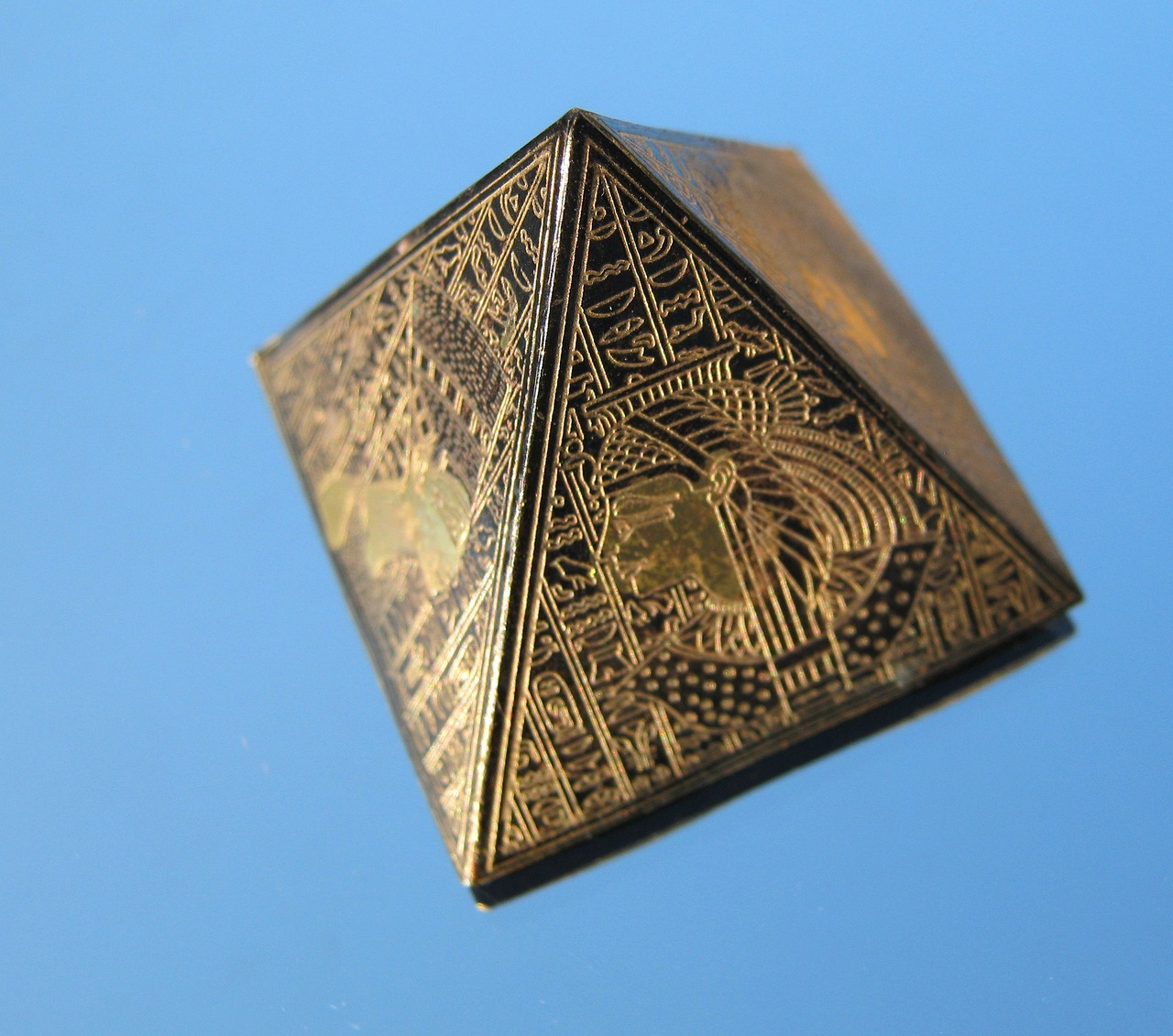
Role of Priests and Ritual Specialists
In ancient Egypt, priests and ritual specialists played a crucial role in the elaborate burial practices and funerary rituals conducted for the deceased. These individuals were highly respected members of society who were believed to have a direct connection to the gods and the afterlife. Their primary responsibility was to ensure the smooth transition of the deceased into the afterlife by performing the necessary ceremonies and rituals.
Priests were responsible for conducting the religious ceremonies at various stages of the burial process, including the mummification of the body, the purification rituals, and the final burial rites. They were well-versed in the complex religious beliefs and rituals of ancient Egyptian culture, guiding the soul of the deceased through the perilous journey to the afterlife.
Ritual specialists, on the other hand, had specialized knowledge and skills in performing specific rituals and magical incantations believed to protect the deceased and assist them in the afterlife. These individuals were entrusted with the important task of ensuring that the deceased had everything they needed for their journey, including magical spells, amulets, and protective charms.
Working together, priests and ritual specialists created a sacred and mystical environment during the burial ceremonies, invoking the blessings of the gods and facilitating the deceased's passage to the realm of the dead. Their expertise and dedication were essential in ensuring that the deceased received the proper rites and honors required for a successful transition to the afterlife.
Throughout ancient Egyptian history, the role of priests and ritual specialists evolved alongside changes in religious beliefs and funerary practices. Different dynasties introduced new rituals and customs, leading to a rich tapestry of burial traditions that reflected the spiritual beliefs and cultural values of the time. Despite these changes, the central role of priests and ritual specialists remained constant, serving as the guardians of the sacred rituals that ensured the eternal well-being of the deceased.
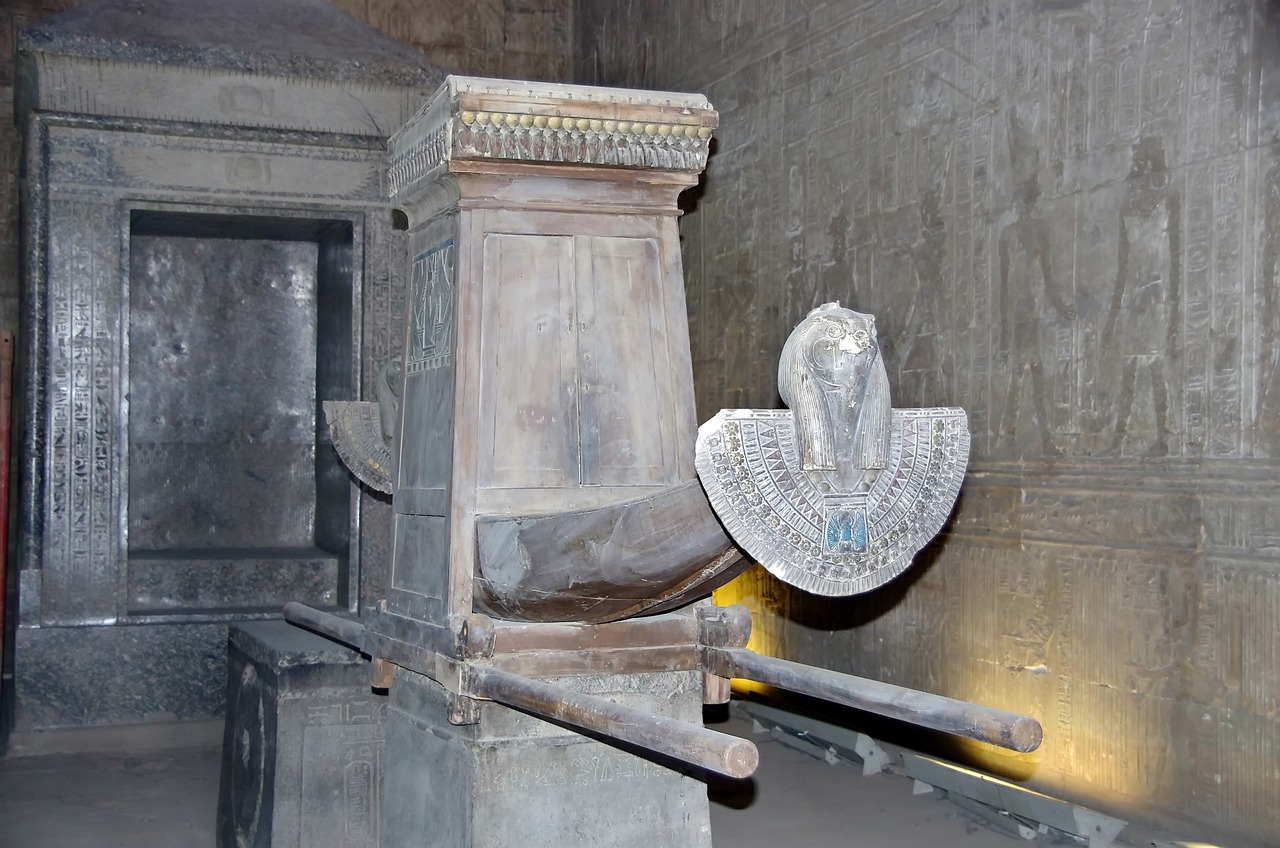
Evolution of Burial Practices
The evolution of burial practices in ancient Egypt is a fascinating journey through time, reflecting the changing beliefs and customs of this ancient civilization. Over millennia, the funerary traditions of the Egyptians underwent significant transformations, influenced by various factors such as religious beliefs, societal changes, and technological advancements.
Initially, in the Predynastic period, the deceased were buried in simple pit graves, often accompanied by basic grave goods such as pottery vessels and tools. These early burials were modest in nature, reflecting a more simplistic view of the afterlife and the journey of the soul.
As the Egyptian civilization flourished and the concept of the afterlife became more elaborate, burial practices evolved to reflect these beliefs. The Old Kingdom saw the emergence of mastaba tombs, flat-roofed rectangular structures built above underground burial chambers. These tombs were the precursors to the iconic pyramids that would come to symbolize ancient Egyptian funerary practices.
During the Middle Kingdom, there was a shift towards rock-cut tombs carved into the cliffs of the desert, providing more elaborate and secure resting places for the deceased. The New Kingdom brought about the construction of grand royal tombs in the Valley of the Kings, showcasing the wealth and power of the pharaohs.
Throughout these periods, the mummification process continued to play a crucial role in preserving the body for the afterlife. The intricate rituals and practices surrounding mummification evolved over time, becoming more sophisticated and complex as the Egyptians sought to ensure the eternal preservation of the deceased.
Symbolism also played a significant role in the evolution of burial practices, with each artifact and ritual carrying deep symbolic meanings related to the journey of the soul and the afterlife. From amulets to canopic jars, every item buried with the deceased held a specific purpose and significance in the funerary context.
As the influence of different dynasties waxed and waned, so too did the burial practices of ancient Egypt. Each new ruler brought their own innovations and interpretations to funerary traditions, leaving a rich tapestry of customs and rituals that continue to captivate scholars and enthusiasts to this day.
In conclusion, the evolution of ancient Egyptian burial practices is a testament to the enduring legacy of this remarkable civilization. From humble beginnings to grand pyramids and elaborate tombs, the funerary traditions of the Egyptians offer a glimpse into their beliefs, values, and aspirations for the afterlife.
Frequently Asked Questions
- What was the purpose of mummification in ancient Egypt?
In ancient Egypt, mummification was a crucial process believed to preserve the body for the afterlife. It involved removing internal organs, desiccating the body, and wrapping it in linen bandages to prevent decay.
- Why did the ancient Egyptians build pyramids?
The pyramids were built as monumental tombs for pharaohs and nobility, symbolizing their power and ensuring a safe passage to the afterlife. The shape of the pyramid was associated with the sun god Ra, reflecting the belief in resurrection and eternal life.
- What were canopic jars used for in ancient Egyptian burials?
Canopic jars were used to store the preserved internal organs of the deceased during the mummification process. Each jar was associated with a different organ and protected by a specific deity, ensuring the organs were safeguarded for the afterlife.
- How did ancient Egyptians view the afterlife?
Ancient Egyptians believed in a complex afterlife journey where the soul would be judged by Osiris, the god of the underworld. Depending on their deeds in life, the soul would either reach paradise or face punishment. Rituals and offerings were essential to ensure a favorable judgment.
- What role did priests play in ancient Egyptian burial practices?
Priests held a significant role in conducting funerary rituals, reciting spells, and performing ceremonies to guide the deceased safely to the afterlife. They were considered intermediaries between the living and the dead, ensuring proper burial rites and offerings were made.



